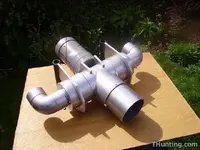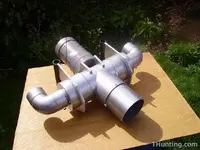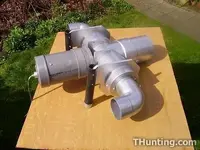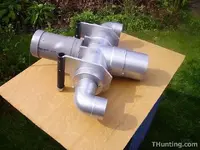Capt Doms sand blower is water flow, not air. It is a dredge with the big hose taken off, and blowing out water. Instead of sucking up sand, it blows it. During the first years of working the 1715 fleet, a small barge had a large propeller sticking straight down below in the middle. It was the first to do that, and they discovered it would blow the sand away. It was made to blow clearer water down into the lower murky layer, so typical of that area, especially during low tides. Then the ashcan (the first thing they were called, since it used metal garbage cans) was invented which were the same as todays prop blowers. And Dom, Cornilius's blower has intake on the elbows, the middle straight one is outflow. You still would need to have it anchored in place.









 . Cornelius
. Cornelius



